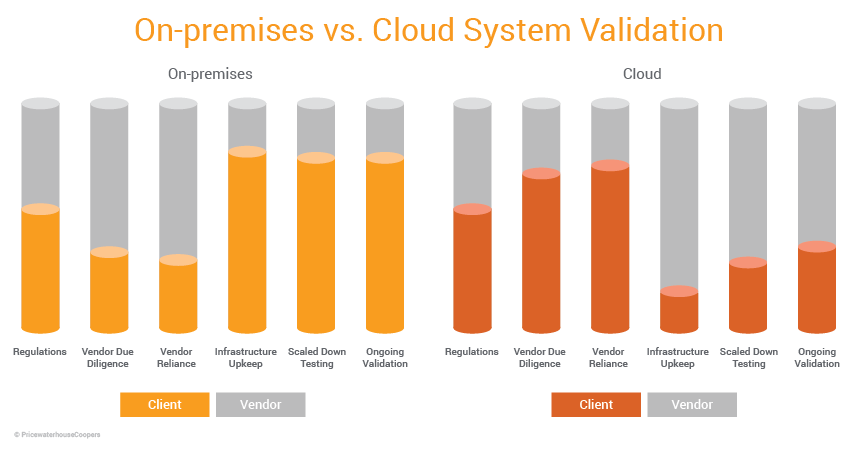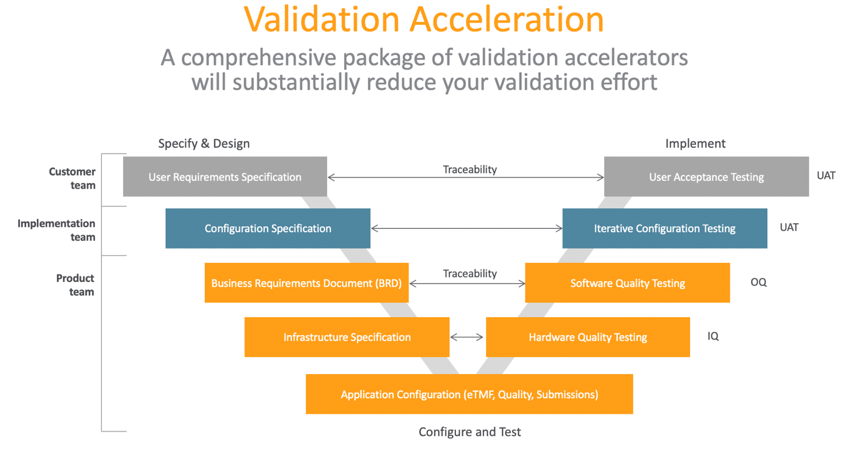Blog
Three Ways to Speed Your GxP Validation without Risk
Jan 20, 2020 | Ashley Wentworth
Jan 20, 2020 | Ashley Wentworth
Computer system validation can often take months to complete. It typically involves infrastructure qualification (IQ), operational qualification (OQ), and performance qualification (PQ) of regulated systems. The cost and effort of GxP validation are significantly high with on-premises applications as customers are fully responsible for performing IQ, OQ, and PQ after each release.
Some companies will even delay system upgrades to avoid the burden of validation. But doing so prevents them from getting essential features to meet business and regulatory requirements.
Modern cloud vendors solve these challenges by performing and documenting all elements of IQ and OQ with each release. They also support customers with planning and executing user acceptance testing (UAT) or PQ.

Here are three best practices to simplify GxP validation in a cloud environment.
- Collaborate with your cloud vendor to clarify roles and responsibilities
For customers migrating to the cloud, this is a crucial step.
In cloud environments, the customer-vendor partnership goes beyond the initial implementation. Cloud vendors are not only responsible for provisioning, maintaining, and securing the infrastructure; they also support customers during critical events, such as audits, inspections, change management, upgrades, and validation.
Collaborating upfront with your vendor helps clarify the roles and responsibilities and avoid missteps and overlaps during these shared activities.
- Leverage your vendor’s validation efforts
Modern cloud vendors help customers minimize the cost and effort of validation. With each release, they provide a set of release documentation, which includes a validation project plan, requirements documents, a test protocol, IQ/OQ, traceability matrices, and a validation summary report. They also provide a sandbox/test environment and UAT test scripts that help customers speed the PQ process.

Reviewing your vendor’s release package is essential to:
- Avoid duplicating the vendor’s validation efforts
- Assess the validation gaps
- Develop a supplementary test plan to reach the validated state
- Implement a risk-based approach to validation
Cloud system configuration and usage vary from customer to customer. As part of validation planning, review your configuration and document each feature that is critical to your business processes. As a standard practice, collaborate with your vendor to identify risks and develop mitigation plans.
This assessment will help you evaluate the potential risk and impact of every update and determine your validation efforts. For example, the vendor’s test plan may be sufficient for a new capability or system change that has a low impact on your business processes.
Upgrade frequently to stay current with industry best practices
Leading cloud vendors bring new capabilities through multiple releases in a year. Benefitting from these incremental features and updates requires a lean validation process.
Following these recommendations will simplify your validation efforts and keep your systems up to date with the latest industry best practices.
Learn more about how to achieve faster and more cost-effective digital validation with Vault Validation Management.
